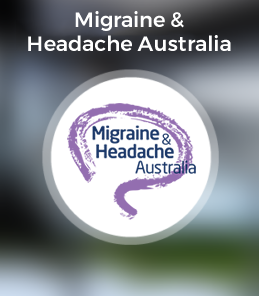(ACM, Arnold-Chiari Malformation,
Cerebellomedullary Malformation Syndrome)
Description
The Chiari malformation is usually present at birth, but can develop later in association with some tumours and spinal abnormalities. Abnormalities at the base of the brain may include the displacement of the lower portion of the brain (cerebellum) and/or brain stem through the opening in the back of the skull (foramen magnum) typically into the spinal canal. Some infants may also have abnormal accumulations of cerebrospinal fluid in the skull (hydrocephalus). Other malformations of the brain and spinal cord (i.e., spina bifida) may also occur.
Symptoms often begin during infancy, although they are usually delayed until adolescence or adulthood. These usually include headache in the occipital region, vomiting, muscle weakness in the head and face, difficulty swallowing, and varying degrees of mental impairment. Paralysis of the arms and legs may also occur. As they grow older, adults and adolescents with Chiari malformation who previously showed no symptoms may show signs of progressive brain impairment, such as involuntary, rapid, downward eye movements.
Many patients with Chiari malformation will also develop a cyst within the spinal cord (syringomyelia). These cysts are usually in the upper part of the cord near the Chiari malformation but may occur in any part of the spinal cord. These patients present with pain and numbness in the arms, legs, or trunk. In severe cases weakness and spasticity of the legs or arms also occurs. Patients may present with symptoms from syringomyelia and have no symptoms from the underlying Chiari malformation.
Treatment
Children with Chiari malformation that is associated with spina bifida may require surgery to repair the myelomeningocele. Hydrocephalus may be treated with surgical implantation of a shunt to relieve increased pressure on the brain. Patients with symptomatic Chiari malformation or syringomyelia may benefit from surgery in which the opening in the base of the skull is enlarged to relieve the pressure on the medulla and to allow normal flow of the cerebrospinal fluid.
Prognosis
Most patients who have surgery experience a reduction or stabilisation of their symptoms. Some patients may experience prolonged periods of relative stability. Infants with very severe malformations may have life-threatening complications.
Further Information and Support
Click here for the latest Australian research papers on Chiari Malformation.
Information
National Institute of Neurological Disorders and Stroke (USA)
ninds.nih.gov/Disorders/All-Disorders/Chiari-Malformation-Information-Page
Support
Hydrocephalus Support Association Inc.
85 Gloucester Rd, HurstvilleNSW 2220
Tel (02) 9586 1057
Email triplej@accsoft.com.au
Chiari and Syringomylia Australia
www.chiariaustralia.org
Email: chiariaustralia@gmail.com
Reviewed by Associate Professor Marcus Stoodley, PhD, FRACS, Prince of Wales Clinical School, Randwick.
DISCLAIMER: The information provided is designed to support, not replace, the relationship that exists between a patient / site visitor and his / her existing health care professionals.





 The Brain Foundation is the largest, independent funder of brain and spinal injury research in Australia. We believe research is the pathway to recovery.
The Brain Foundation is the largest, independent funder of brain and spinal injury research in Australia. We believe research is the pathway to recovery.